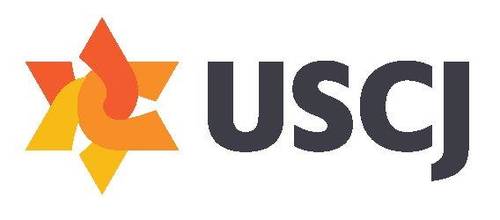June 2014, Written by Geula Zamist – Printed in NJJN June 2014

In 1913, in a small school in Greenwich Village, Caroline Pratt did an educational experiment. She created a program she called Play School where young children would be free to use materials to construct their knowledge about the world. For this experiment she created a set of wooden unit blocks.
The school grew and was renamed the City and Country School and to this day, wooden blocks are an essential piece of equipment in early childhood classrooms everywhere.
Recently, the Early Childhood Center at CAI received a gift of hundreds of new unit blocks. In order to assure that those blocks provided the best educational experience possible, Geula made sure to provide high-quality professional development for the faculty. Betsy Grob, a professor at Bank Street College in New York, visited the school and presented a workshop, which involved a presentation, a slide show and ample time for hands-on building experiences.
During the workshop, four groups of teachers were given a challenge to build a structure. After working together in teams, the teachers reflected on the experience and shared the lessons learned that they will apply in their classrooms.
As the teachers described the process of creating their structure, Ms. Grob was able to point out the learning that went on in all of the different domains including: math, science, social studies, socio-emotional, and motor skills.
She offered the teachers suggestions on how to support the block building experiences in their room and deepen the learning. A teacher’s presence, comments and guidance are very important components of the learning.
Teachers reviewed the different stages of block building. Very young children like to carry blocks around and then slowly begin to create rows. Later, the children begin to bridge with their blocks and then make enclosures. Slowly, we see children use more imagination in their building and create more elaborate designs. Older children enjoy naming their structures and building structures to reproduce or symbolize actual structures they know.
As teachers are made aware of these stages, they, in turn, can begin to help move their students from one stage to the next.
While creating structures in the block area in the classroom, children are learning to problem solve, handle frustration, explore geometric relationships, estimate, and link form and function – just to name a few of the skills. As they clean up the blocks, they are practicing sorting, counting and classifying – essential to the development of their early mathematical knowledge.
Professional development has been a hallmark of the school program. When teachers deepen their learning and understanding of children’s development, our students’ education is enhanced.
Through professional learning, just like through block play, we have opportunities for discovery, opportunities to explore and opportunities to deepen relationships. Block play can lead to many wonderful possibilities.
After staff development workshops, we generally follow up with written evaluations to get feedback from the teachers, assess what they have learned and consider the applications to the classroom. In this case, the feedback came in the form of the energy in the hallways the next day. Teachers were eager to get the new blocks in the classroom, and with the new language and appropriate encouragement, children’s block building became richer and deeper the very next day.
Frank Lloyd Wright credited his own early experiences with building blocks to shaping his decision to become an architect. Who knows if we have future architects and designers in our classrooms at the CAI ECC?

